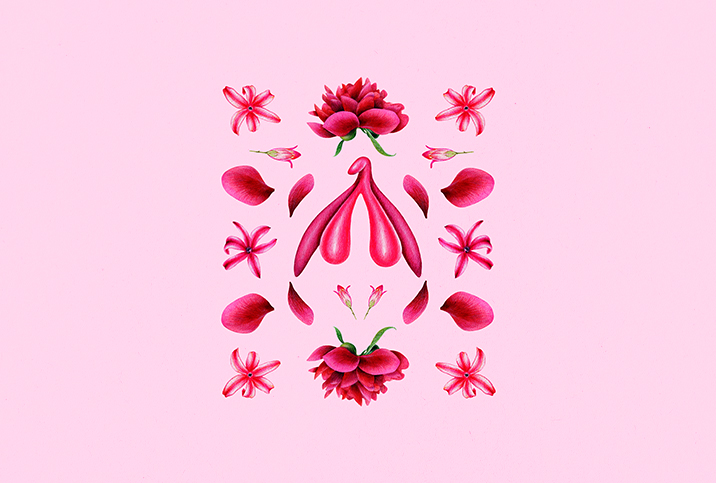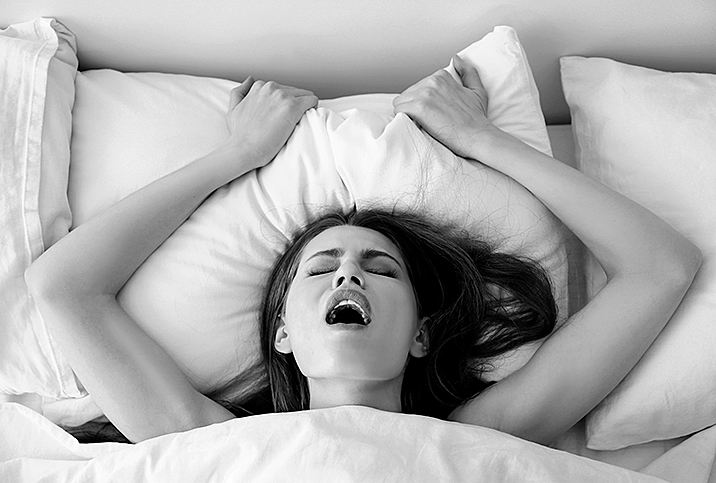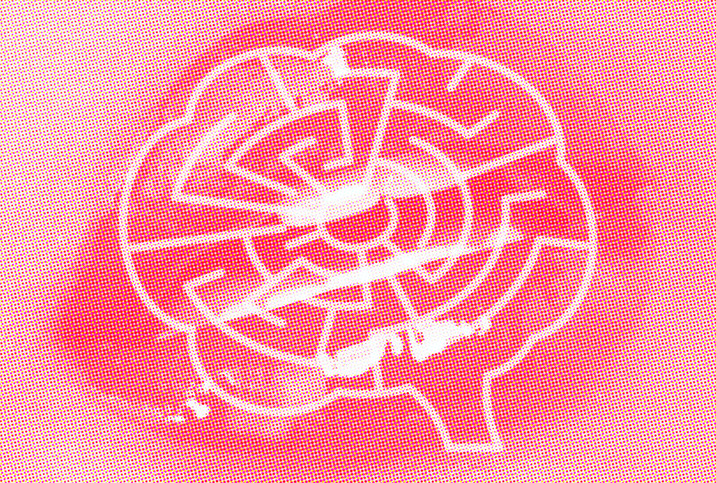Let's Investigate The Internal Clitoris

The common refrain in clitoral anatomy is that the button-shaped external, visible clitoris is "only the tip of the iceberg." The word "only" is reductive, but the visual stands.
The overall structure of the internal and external clitoris is typically explained by its relationship to the penis; both structures are homologous—or similar in position and structure—but their function is completely different.
So while the bulb of the penis roughly equates to the glans clitoris—the external tip of the clitoral iceberg—there are other, more subtle comparisons and dichotomies to be made.
Inside the clitoris
"The main difference [from the penis] is that most of the structure is internal," said sexual psychophysiologist Nicole Prause, Ph.D. "The main internal structures, called legs or crura, extend in a wishbone shape behind the labia, terminating in the vestibular bulbs. These legs never meet or encircle, such as around the vagina."
The clitoral shaft splits into crura—or legs—which attach at one end to pelvic cartilage, and on the other end transition into the two vestibular bulbs. The vestibular bulbs are a pair of expanding chambers that engorge with blood, a phenomenon known as vasocongestion. Prause outlines the difference between male and female vasocongestion.
"The idea of 'erectile tissue' may be the confusing bit here because the tissue itself does not become erect," Prause explained. "This is both because the tissue actually reduces tonicity to allow blood to flow in, as it is not muscle that is tensed and because there is not a mechanism to increase intracorporeal pressure as there must be for a penis, which needs to be sufficiently rigid for penetration."
Female erectile tissue is different from what we associate with the word 'erectile.'
In other words, female erectile tissue is different from what we associate with the word "erectile," as relaxed vaginal muscles are better suited to engorge than tense muscles. Blood flow may expand the external clitoris enough to alter its appearance in some women, and also makes the vulva more flushed and bouncy to the touch. Obviously, the female genital structure never becomes rigid like a penis. Rather, the amount to which vasocongestion firms the genitals is enough to support penetration.
Also active in this process are the corpus cavernosum.
"The cavernosa do vary somewhat in their positioning from woman to woman, but do not 'cover' the bulbs," Prause said. "In some women, the cavernosa are thinner and angled somewhat deeper into the body. In other women, the cavernosa are more rounded and can appear almost behind the bulbs."
Every woman is different
If all of this information feels complex and a bit overwhelming, Prause is quick to remind us that every woman is different, which means these structures will vary from person to person, and the diagrams you'll see of the female reproductive system should not be taken as identical for all women.
"They [the clitoris and female reproductive system] are supported by the same long pelvic musculature, but not functionally linked so far as we know," Prause added.
Despite the two being neighbors, no connection or symbiosis has thus far been scientifically confirmed. That said, many of the most common assumptions about the clitoris are problematic or inaccurate. For instance, sexual health educator Kate Delgado debunks the oft-quoted statistic that the clitoris has between 8,000 and 10,000 nerve endings, at least double that of the penis.
"This factoid is actually based on a study on bovine," Delgado said. "Cows have 8,000 nerve endings in their clitoris. We're not actually sure how many humans have!"
That the most commonly shared clitoral fact is actually a confused leftover from a study performed on cows 50 years ago feels emblematic of the general lack of mainstream knowledge of the clitoris and its function. Except for medical experts concerned with genital matters, this information isn't commonly taught even among many healthcare professionals.
Underestimating female bodies or blatant disinformation isn't new, but we can change that one article at a time.


















